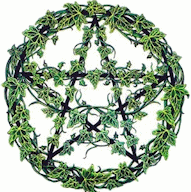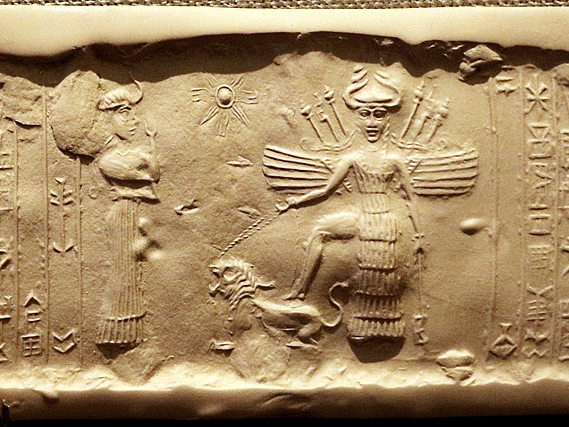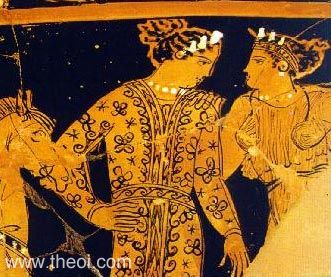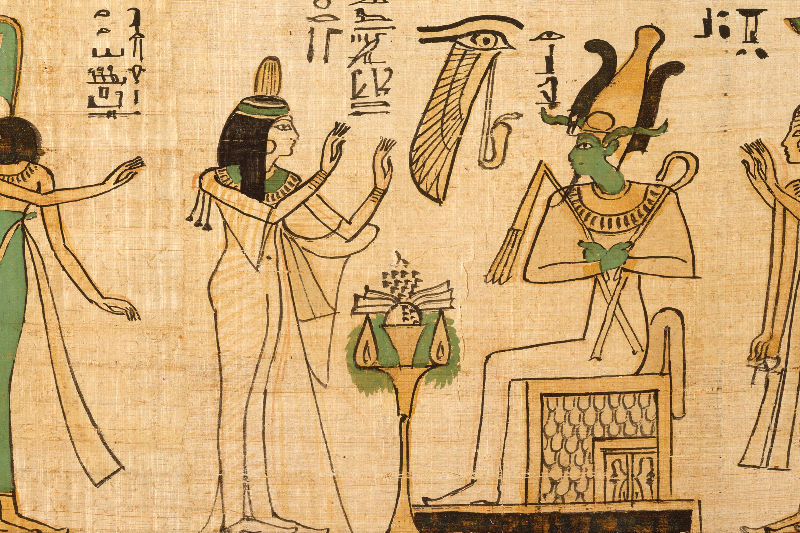Sumer is the oldest known civilization in the middle east. It lies in the Mesopotamia area of what is now Iraq. Mesopotamia is one of the six “cradles of civilization”, areas where humans first settled into agrarian cultures.
Sumerians are believed to have worshiped thousands of gods and goddesses, with each city having its own patron god or goddess, and gods and goddesses associated with almost every natural force or object.
Some of the primary gods and goddesses of Sumer are:
- Nammu: Nammu was the Goddess who gave birth to the first deities, An, the God of Heaven, and Ki, the Goddess of The Earth. Nammu also gave birth to many more Gods and Goddesses. Nammu is a personification of the Sea at the beginning of the world and the Mother Goddess.
- Ki: Also called Ninhursag, Ki is the Goddess of the Earth and was the female counterpart to An the God of Heaven. It is thought that they were originally united as one when they were born from the Goddess Nammu. After they raised their son Enlil they separated, An then became the ruler of heaven and Ki became the ruler of Earth.
- An: An is the God of Heaven, and the Sumerians believed that he was the supreme ruler of the pantheon. He represents the father of all the Gods. His wife is the Goddess Ki. It was An that took over heaven when it was separated from Earth.
- Gula: The Goddess Gula was a healing Goddess who understood the ways of disease and illness, and she became the patroness of doctors. She was worshipped in different areas under a plethora of different names.
- Enlil: Enlil has been described as a father, creator, supreme lord, and raging storm. This powerful God had the important task of allocating land and kingship to the kings and is responsible for planning and creating most of the features in the cosmos. Enili had a tablet that enabled him to see the destinies of the world. In most Sumerian literature, Enlil is described as a violent and destructive god, but it is clear that in the myths, he was a friendly, fatherly god, who ensured the safety and wellbeing of all humans, particularly the inhabitants of Sumer.
- Enki: Enki was a great Sumerian Water God and was one of the four creation deities. He represents fresh water, male fertility, and knowledge. He was depicted with flowing streams of water and swimming with fish. He was responsible for filling the Tigris and Euphrates rivers with sparkling water and fish. Enki’s most important role was to offer the king understanding, skill, and knowledge, although he was also associated with wisdom, magic, incantations, arts, and crafts.
- Ereshkigal: Ereshkigal is the Goddess of Death and Gloom. She ruled the land of no return that is the realm of the dead. There was an unbroken rule that anyone who entered the underworld was unable to return without producing a substitute.
- Utu: God of the Sun, Utu is the personification of the brilliant light of the sun, which comes each day to illuminate the mortal realm. He was often depicted with fiery rays and a saw knife. The Sun God was portrayed as a muscly, bearded man. Utu would see everything during his journeys across the sky; it was this belief that also made him a God of Truth and Justice.
- Nanna: The God of the Moon and the major astral deity of the Sumerians. He was conceived when Ninlil was impregnated by the water of Enlil. Nanna was said to have brought light into the lapis lazuli sky, the Sumerians called these lights ‘little ones’ (stars) and ‘the big ones’ (planets). Nanna was also one of the patron deities of Ur.
- Inanna: Although part of the Sumerian pantheon, the goddess Inanna was primarily worshiped by the Akkadians, the culture that conquered the Sumerians around 2340 BCE. She is the Sumerian goddess of love, sexuality, prostitution, and war. She was the divine personification of the planet Venus, the morning and evening star.
This page is a brief overview of some of the most popular gods and goddesses of this pantheon. If you are drawn to a particular pantheon, you should do further study of that culture and mythology. Every culture has a different view of how powerful their gods are, whether they can die, and how the gods are to be approached. You should always try to approach a god or goddess in a way similar to the culture which worships that being.





